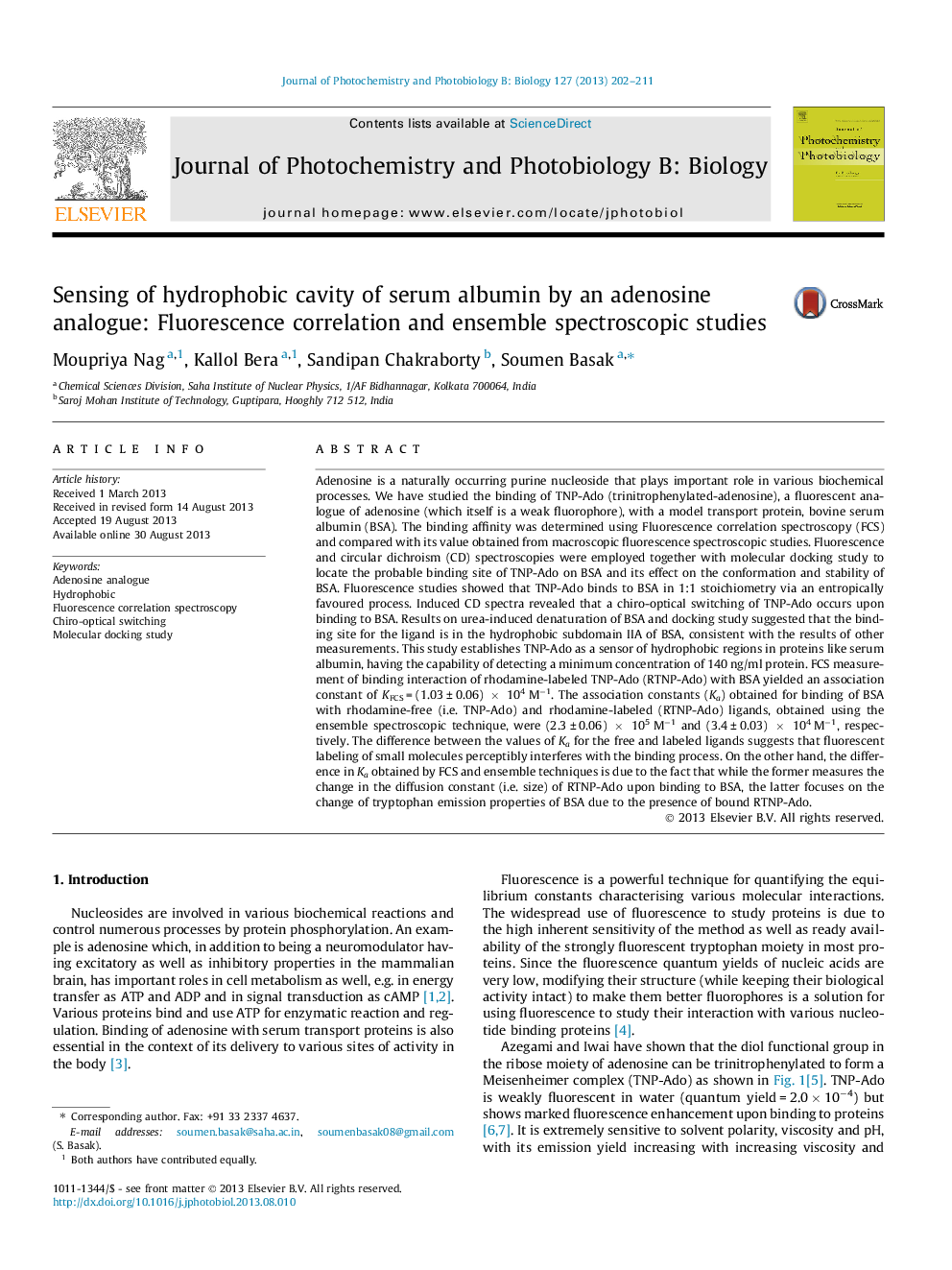| کد مقاله | کد نشریه | سال انتشار | مقاله انگلیسی | نسخه تمام متن |
|---|---|---|---|---|
| 30340 | 44469 | 2013 | 10 صفحه PDF | دانلود رایگان |

• TNP-Ado, an optical tracer of adenosine maintains its biological activity.
• TNP-Ado binds to domain IIA of BSA.
• TNP-Ado, a hydrophobic sensor, can sensethe hydrophobic core of BSA (just 140 ng/ml).
Adenosine is a naturally occurring purine nucleoside that plays important role in various biochemical processes. We have studied the binding of TNP-Ado (trinitrophenylated-adenosine), a fluorescent analogue of adenosine (which itself is a weak fluorophore), with a model transport protein, bovine serum albumin (BSA). The binding affinity was determined using Fluorescence correlation spectroscopy (FCS) and compared with its value obtained from macroscopic fluorescence spectroscopic studies. Fluorescence and circular dichroism (CD) spectroscopies were employed together with molecular docking study to locate the probable binding site of TNP-Ado on BSA and its effect on the conformation and stability of BSA. Fluorescence studies showed that TNP-Ado binds to BSA in 1:1 stoichiometry via an entropically favoured process. Induced CD spectra revealed that a chiro-optical switching of TNP-Ado occurs upon binding to BSA. Results on urea-induced denaturation of BSA and docking study suggested that the binding site for the ligand is in the hydrophobic subdomain IIA of BSA, consistent with the results of other measurements. This study establishes TNP-Ado as a sensor of hydrophobic regions in proteins like serum albumin, having the capability of detecting a minimum concentration of 140 ng/ml protein. FCS measurement of binding interaction of rhodamine-labeled TNP-Ado (RTNP-Ado) with BSA yielded an association constant of KFCS = (1.03 ± 0.06) × 104 M−1. The association constants (Ka) obtained for binding of BSA with rhodamine-free (i.e. TNP-Ado) and rhodamine-labeled (RTNP-Ado) ligands, obtained using the ensemble spectroscopic technique, were (2.3 ± 0.06) × 105 M−1 and (3.4 ± 0.03) × 104 M−1, respectively. The difference between the values of Ka for the free and labeled ligands suggests that fluorescent labeling of small molecules perceptibly interferes with the binding process. On the other hand, the difference in Ka obtained by FCS and ensemble techniques is due to the fact that while the former measures the change in the diffusion constant (i.e. size) of RTNP-Ado upon binding to BSA, the latter focuses on the change of tryptophan emission properties of BSA due to the presence of bound RTNP-Ado.
Figure optionsDownload as PowerPoint slide
Journal: Journal of Photochemistry and Photobiology B: Biology - Volume 127, 5 October 2013, Pages 202–211